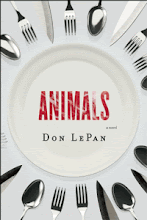At one point in his very interesting long review of Go Set a Watchman, Lawrence Hill comments that the experience of reading the book can teach us a good deal about “the artistic and the editorial process.” Perhaps most notably, he suggests, “a novel about an adult who goes home and offers a number of flashbacks about her childhood is less dramatically immediate than a story that dives straight into the childhood itself” (Globe and Mail, July 18 2015). Famously, that was the suggestion made by Tay Hohoff, the editor at Lippincott who in 1957 advised Harper Lee to scrap the manuscript now published as Go Set a Watchman, and to expand the flashbacks in that manuscript into a different novel, told directly from the young person’s point of view. Much as many reviewers of Go Set a Watchman find the book interesting, everyone seems agreed that Hohoff gave Lee good advice—that To Kill a Mockingbird is a more dramatically immediate book (and a better one) than is Go Set a Watchman.
I was lucky enough to receive very similar advice a couple of years ago from an old high school friend (and now distinguished philosopher), Tom Hurka. He gave me several pieces of good advice after reading a draft of Rising Stories; the most important was to scrap a lot of second-hand recounting in summary form (by someone in old age) of events that had taken place in the late 1930s, and to tell them directly from the perspectives of the characters involved as the events were happening. Just as Tom had suggested it would, that had the effect of making the story more dramatically immediate—and the novel much better.
Tom was not the only one to give me very good and very useful advice on how to improve the early drafts of Rising Stories; in all, well over a dozen people were kind enough to read a draft and offer helpful comments, suggestions, and criticisms; the final result is, as a result, tremendously improved.
I followed the same process with my first novel, Animals, and in that case too I am convinced that the final result is far, far better than it would have been had I tried to write entirely in isolation. I recognize, of course, that to think of good writing as to some degree a collaborative enterprise goes against the grain for many in the literary community. Shakespeare and Middleton and Jonson may often have collaborated with other playwrights, but since the Romantic period the presumption has taken root that the appropriate stance for a writer to take is to work in isolation—that to collaborate to any significant degree might somehow constitute a threat to the integrity or the originality of the work.
No doubt that model may work for some writers, but I certainly can’t imagine it working for me. And, ironically enough, it was not the approach that the most famous writers of the Romantic period took either. Coleridge and Wordsworth worked together in shaping Lyrical Ballads, Mary Shelley received helpful advice from Percy Shelley in writing Frankenstein—and so too did Percy Shelley receive helpful advice from her and from others, and so too did Keats, and so too did others of their group. (For those wishing to explore the topic, Jeffrey N. Cox’s Poetry and Politics in the Cockney School and Jack Stillinger’s Multiple Authorship and the Myth of Solitary Genius are good places to start.) In this respect, those who aspire to be solitary geniuses may be even more unusual than many of them imagine themselves to be.
PS As has almost always been the case in recent years with anything I have written, I received helpful advice from Maureen Okun in writing the above.
Subscribe to:
Post Comments (Atom)





No comments:
Post a Comment
Comments welcome!